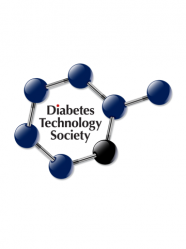The 2008 Meeting of the Diabetes Technology Society

As 2008 ends and we look forward to the new year, it’s perhaps fitting that we look at the future of diabetes technology. In November, we traveled to Washington DC to attend the annual meeting of the Diabetes Technology Society, a gathering of prominent researchers in the field. Though progress in diabetes devices is always being made, this might not be evident to patients who are frustrated with their devices. We heard a lot about promising technologies that aren’t ready for the market just yet and about some important device-related research that’s going on ‘behind the scenes’. Of most interest to us were new results from the Juvenile Diabetes Research Foundation (JDRF) continuous glucose monitoring trial (CGM), a new on-line diabetes management system, and updates on the artificial pancreas.
the jdrf continuous glucose monitoring trial
In issue 12’s Conference Pearls, we discussed the JDRF trial, which investigated the efficacy of CGM use in improving glycemic control over six months. The results showed that CGM was a useful therapeutic tool in people with A1c’s greater than 7%, and particularly in those who wore the device frequently.
At this meeting, Dr. William Tamborlane (Yale University, CT) presented results of a second arm of the study that looked at the efficacy of CGM in people with A1cs less than 7%. The study involved more than 100 subjects and took place for six months. The data showed that the devices were helpful in reducing hypoglycemia. In the patients using the CGM devices, the number of minutes spent with glucose below 70 mg/dL daily decreased from 91 minutes to 54 minutes, and it did not decrease in the control group (who were not using the devices). Patients using CGM were able to maintain their A1c at an average value of 6.4% over the course of the study, while the A1cs of people not using the devices rose from 6.5% to 6.8%. There was no difference in severe hypoglycemia between those people using the devices and those who didn’t. Dr. Tamborlane said that he thinks the evidence is definitely on the side of CGM even for those people already in good control. For our part, we hope that these new results will help to further reimbursement for the devices.
 in-touch diabetes management
in-touch diabetes management
Our second ‘highlight’ is a diabetes management service called In-Touch Diabetes from SymCare Personalized Health Solutions. It’s an online service that is meant as a complete system to help you manage your diabetes in a number of different ways: it records your glucose information and helps you find trends in your numbers, provides education and coaching about the disease, gives you management goals, and rewards your success. We had a chance to see a live demo, and we were impressed with its features and ease of use. Data from your meter are sent by Bluetooth to your cell phone and then to the SymCare system, which saves you from having to type in your test results.
One of the most interesting features is the reward system, which rewards you for achieving glycemic and diabetes management goals by giving you discounts at Amazon.com. The system is still awaiting approval in the US, but it’s definitely worth keeping an eye out for!
the artificial pancreas
Finally, we heard quite a bit about the artificial pancreas. As always, we have to manage our expectations, because it takes a long time to do such ground-breaking research. Many of the takeaways reinforced what we heard at the Artificial Pancreas meeting back in July. We can’t let perfection get in the way of progress—imperfect CGM devices and algorithms may be obstacles but they’re not a reason to stop research, they’re a reason to keep moving ahead and work on addressing the barriers.
We did hear some real progress on the algorithm side, where teams are figuring out the computer programs to precisely dose insulin based on readings from a CGM, and researchers are starting to use these algorithms for human studies of possible closed-loop systems. Dr. Ed Damiano began human trials earlier this year with his bi-hormonal closed-loop system – so titled because it uses both insulin (to lower blood sugar) and glucagon (to raise it when it gets too low). His studies are promising but are using real-time blood glucose measurements instead of the interstitial fluid that current CGM devices use.
Another researcher, Dr. Cesar Palerm, talked about his work on a closed-loop system using insulin feedback to predict glucose levels. The system tries to 'guess' what your insulin levels will be after eating and use that to help decide how much more insulin you'll need. Both systems have advantages and disadvantages: The bi-hormonal system is challenging because it involves two drugs and so it will be harder to manufacture and submit for FDA approval, but on the other hand it does provide glucagon to prevent hypoglycemia. However, Dr. Palerm's work is further along in human trials and avoids the complications of delivering both insulin AND glucagon. This is a big plus, and we think that the first generation of the artificial pancreas will probably use just insulin.
After attending this meeting, we’re more sure than ever that great research is going on, but unfortunately nobody can pinpoint when a real artificial pancreas will be available. Everyone (including us!) appears really excited about this technology – and seems to believe that a “hybrid” system could be available as early as 2012.







